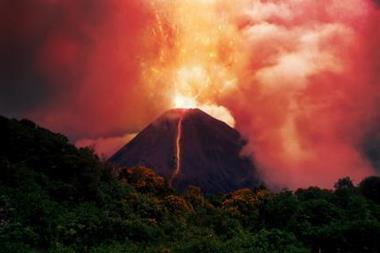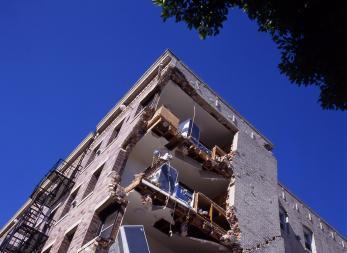Against all predictions, 2009 was a relatively mild year for hurricanes. We investigate what kept the tropical storms at bay, and how commercial and scientific factors will shape the cat market in 2010
Every year, the insurance industry waits to see what havoc the hurricane season will wreak – and how many billions it will generate in claims costs. But 2009 defied statistical probability, coming and going with barely a whimper when compared with previous years.
But this welcome respite seems to contradict accepted scientific research that shows we are in a wider period of high hurricane activity. It also runs counter to broadly held predictions that global warming will intensify the effects of such natural catastrophes, and consequently create greater risks for the insurance sector.
Furthermore, only four years ago the North Atlantic was blasted by the most active hurricane season on record. In 2005. the season, which usually runs from June to November, produced 28 named storms. Fifteen of these became hurricanes, seven of them “major”, reaching or exceeding category three on the Saffir-Simpson hurricane scale.
Four of the seven hurricanes eventually hit the top category five status, including Hurricane Katrina – the costliest and one of the deadliest hurricanes in US history.
Overall, the 2005 season cost the insurance sector more than $80bn (£50.8bn). By contrast, when the 2009 season ended, only nine storms – of which three became hurricanes – were recorded. And for the first time in three years, none made landfall in the USA. Consequently, on 1 January the low-impact season exerted a downward pull on reinsurance rates as they dropped by 10%.
So what does this mean for the insurance sector? Theoretically, an active season with large-scale natural catastrophe losses depletes capital and makes market players more risk averse. This usually triggers rate increases in both reinsurance and insurance.
The converse is true for a low activity season – a below-average natural catastrophe loss tends to be followed by rate decreases.
Willis Analytics (International) catastrophe management services business leader Andrew Mitchell explains that insurers now have the opportunity to rebuild capital and take advantage of other business options, such as buying shares and looking for acquisitions. Insurers are likely to be able to retain more business, however, reducing their spend on reinsurance.
Rising sea temperatures
Last year’s season was even more of an anomaly when taking into account current variations in oceanic patterns. The North Atlantic is now subject to a phenomenon known as the Atlantic multidecadal oscillation (AMO). The AMO alternates between a positive or negative phase, each of which lasts 25 to 40 years. In 1995, the AMO entered a positive phase, leading to an increase in sea surface temperatures.
Head of Swiss Re’s cat perils Americas hub Andrew Castaldi explains: “During the positive phase, the sea surface temperature in the Atlantic is above the long-term average, which leads to favourable conditions for tropical cyclone development.”
This means that conditions were ripe for 2009 to be an active season, with at least 14 storms. So what happened?
The arrival of El Niño, a Pacific water pattern that settles in the North Atlantic every two to seven years, was the first factor to dent expectations. The El Niño effect creates what is known as wind shear – a radical shift in wind speed and direction that occurs over a very short distance – curbing the formation and intensity of storms.
Secondly, the sea temperatures in the North Atlantic were lower than in previous years, as El Niño dampened the effect of the AMO, further preventing large-scale storms from brewing.
Willis Analytics (USA) catastrophe management services business leader Kyle Beatty says: “Sea temperatures were above average but not to the extent we saw in 2005. That was one factor that led to relatively fewer storms getting started.”
Low hurricane activity does not always equal small losses, however. A “quiet” season can still bring disaster if the hurricanes that do form hit land.
LIoyd’s head of exposure management Paul Nunn points out that although there was little hurricane activity in 1992, it emerged as one of the most destructive seasons on record. Despite the presence of El Niño, an unusually high number of hurricanes made landfall, including Hurricane Andrew. Andrew, the first major hurricane to hit Florida in more than 25 years, killed 60 people and generated overall losses of $26.5bn.
Low pressure protects coast
But in 2009, a third stroke of luck came into play as a persistent low pressure system over the eastern United States guided any storms that survived the wind shear away from land and back out to sea.
“The low pressure system tends to direct storms up along the coasts and out into the North Atlantic, rather than allowing them to move directly into the Gulf of Mexico and into the south-eastern United States,” Beatty explains.
But some argue that the quiet season should not automatically lead to the expected reduction of rates. Chief executive of Hyperion’s underwriting agency, Dual International, and former chief executive of Arch Insurance Europe, Bob Van Gieson argues that Hurricane Ike racked up substantial losses in 2008 ($30bn), and that rate reductions in 2010 on the back of the minimal losses of 2009 failed to take this into account.
“I would say the insurance industry did not recoup the losses that it incurred in 2008. Inevitably, they will forget the tragedy of ’08 and think about all the good things that happened in ’09,” he says.
Van Gieson also believes that rate reductions could delay the time it takes for the market to regain equilibrium. “If you reduce rates by 15%, in order to get back to normal you have to increase them back by 30%,” he says.
Castaldi also delivers a warning. “Let’s not forget we are still in a warm AMO phase, interest rates are low and a major Californian earthquake is statistically overdue. Short memories can lead to long faces,” he says.
However, in another challenge to accepted wisdom, the “quiet” season of 2009 is unlikely to translate into rate increases in the primary insurance sector.
Mitchell explains that, over the past couple of years, primary insurers have been less inclined to obey rate fluctuations in reinsurance. While Hurricanes Gustav and Ike in 2008 did not translate into great rate increases for 2009, the credit crunch and collapse of investment income ensured an upward pull on rates.
Insurers failed to follow this lead, however. When reinsurances rates dropped again at the beginning of this year, rates in the primary sector remained stable.
Mitchell says: “It shows that the primary market is generally more confident that it has greater capital, more options about where to do business and does not need to follow its reinsurance pricing to the close extent it has in previous years.”
So what does 2010 have in store? Most experts agree it is unlikely that the coming season will be as well behaved as last year. The El Niño effect is expected to subside over the course of this year, so improving conditions for the formation of hurricanes. Moreover, the current warm phase is set to remain well in place for the next five to 15 years.
Meanwhile, the Department of Atmospheric Science at Colorado State University and the Tropical Storm Risk consortium have forecast that the season ahead will be one of above-average activity. Both also predict an above-average probability of US landfall.
Effects of climate change
Many believe too that as the effects of climate change become more keenly felt, the risk of greater activity will increase.
Head of Munich Re’s corporate climate centre Ernst Rauch says: “Climate change increases the temperatures in the atmosphere, but at the same time it increases the sea surface temperatures … and there is a very strong correlation between sea surface temperatures and hurricane activity.
“Essentially, the higher the sea surface temperatures, the higher the probability for a busy hurricane season.”
Moreover, Nunn of Lloyd’s warns: “I think that climate change is adding to the Atlantic hurricane risk year on year, but in a small upward trend. When we go back to the next cool phase, I think there will be a higher-hazard cool phase than the previous one.”
But Nunn adds that the insurance sector will be well equipped to deal with the risks if the scientists are proved right and the future does yield a greater number of destructive hurricanes. Within the next 20 to 40 years, he argues, more research will be done on the effects of climate change and the required responses to this threat.
“As a society we will be building more resilient properties and the loss experience will be mitigated because of the way we build things or the zoning of buildings … I think the industry will continue to provide protection against hurricane risks.”
But for now there is little the insurance sector can do but wait and see what the next season will bring. IT






































No comments yet